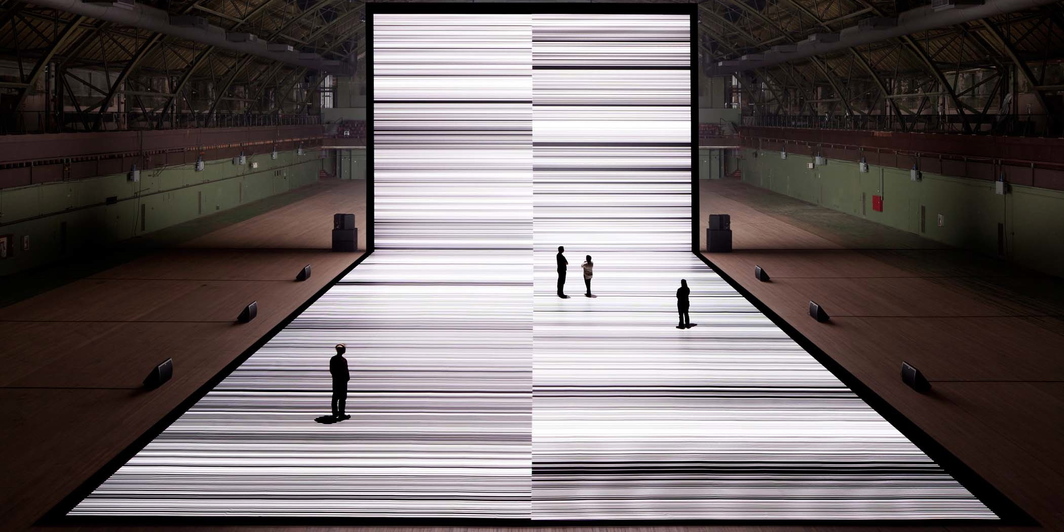With the rise of graphic design, NFTs, AI technology, and many more, it appears that the art world is inevitably becoming engulfed by the theme of the ‘digital’. Digital technology has become a prime medium for artists, a hot topic for exhibitions and, as this blog will explore, even a muse and artist. Although recently many artists and exhibitions have explored the impact of the digital world on our identities and society as a whole, few artists have stepped back to explore the raw components of the digital space or employ its language (that is, data) as a medium.
Originating from the sphere of music, one such artist is Ryoji Ikeda. Ikeda is Japanese-born and currently working in Paris, France. As early as 2002, his works have been exhibited around the globe, most notably in the Eye Filmmuseum (Amsterdam), Times Square (New York) and 180 The Strand (London).

Ryoji Ikeda stands out within the discourse of digital art thanks to his devotion to data as an art medium. In his works, the digital can perhaps be interpreted as muse – Ikeda finds inspiration in the “rhythmic beauty” of the digital world. In addition, the digital also plays a role as an artist – the installations are sonic and visual products of computer language, or binary, directly employing the ‘raw’ building blocks of the digital space. By visualising the backbone of the digital world, Ikeda grants the digital its very own aesthetic, making tangible the invisible world of zeros and ones that hides within the technology we are glued to for hours on end. The simplicity of data (in its core as binary) is juxtaposed with the chaos and enormity of the digital world we consume, which continuously complicates our sense of time and space.
In 2008, Ikeda exhibited Test Pattern, a work which perhaps best encompasses this juxtaposition. For Test Pattern, Ikeda created a system that takes information from photos, sounds or even movies and converts their data into black-and-white patterns projected onto large screens. Ikeda’s equally abstract music is coordinated with the fast-paced visualisations, creating an overwhelming experience of flashing images and electronic sounds.
TW: STROBE WARNING
The process of Test Pattern employs complexity further: Ikeda began with a digital presence, be it a photo or sound, which he reduced to binary, then visually and sonically represented within a gallery space through the technology of projectors and speakers. Ultimately, the work began from art, transformed into math and back to art. The starting point of this work has undergone a whole mesh of digital changes; it has been diluted and decontextualised to an unrecognisable state using the simplest data language possible – “zeros and ones, black and white.“
And yet, despite the aesthetic simplicity of the end product, the work has often been described by many critics, and Ikeda himself, as “sublime.” Whereas art of the pre-digital age, for instance an Albert Bierstadt painting, was sublime in showing the overwhelming beauty of a landscape, Ryoji Ikeda’s work exemplifies how our new sublime experience is no longer found only in nature, but even within the bleakness of an endless, intangible landscape of data.


Recent Comments